
Will the Yokohama World Time Attack Challenge ever stop surprising us?
Speedhunters first came to cover this event in 2010, and since then we’ve watched it gain the sort of momentum that most other motorsport series around the world can only dream about. To the casual bystander, it may all just be a bunch of purpose-built cars lapping the same track to see who’s the fastest, but the sheer competition that now exists between teams has not only evolved the entire global time attack scene, but it continues to make it even more interesting and exciting. That’s not an easy thing to accomplish.

Yet here I am, along with our resident Australian Speedhunter, Matt, and Richard who has joined us from New Zealand, getting all excited about the two days of competition that are about to play out at Sydney Motorsport Park.

While every competing car is impressive in its own right, the Pro Class machines take things to the next level. These weapons are built around the single most important thing when it comes to creating a capable and competitive time attack car – aerodynamics.
Aero is like a huge jigsaw puzzle, all engineered around extracting the utmost performance. Change one small thing and that variation can have a massive effect on another area of the car.
As Andrew Brilliant has previously explained to me, it’s a massive and complex balancing act, just like you see here on Andy Forest’s Subaru Impreza WRX. We’ve featured this car before, but seeing as it’s a very different machine now we’ve got a spotlight coming up in which you’ll be able to indulge in all the details.

If you recall my WTAC 2017 Starts Here post from last month, Ando-san’s Evo is the newest entry from Japan. Much like Under Suzuki and his Scorch Racing Nissan Silvia S15, Ando’s car is a privateer endeavour; he’s just a guy who wanted to build something worthy of challenging the best in the business.

The car looks far more complete wearing all of its Voltex aero package compared to when we saw it compete last at Tsukuba.

Today was mostly about fine-tuning suspension and aero settings, and ironing out any issues.

It looks like Under Suzuki will have an even tougher battle this year; he’s here to do just one thing – finally nail the top spot and take the coveted WTAC title back home to Japan.

His car has be further evolved over the course of the last 12 months and there are some subtle changes to the aero side of things.

With the threat of rain for Saturday’s main competition day, there’s a very good chance that the teams will go all-out from the get-go tomorrow morning. But there’s also the possibility for Saturday afternoon to dry up completely, leaving behind low air and track temperatures for perfect record-breaking conditions.

The Insight Motorsport Holden Astra has seen a lot of evolution in the aerodynamics department.
That massive front wing together with the rear treatment easily makes it one of the most unique entries in the Pro Class, and the first non-Japanese entry we’ve seen thus far.

Of course, we can’t forget the PR Tech Racing Porsche 968 which looks remarkably different this year with a redesigned cowl and spoiler, and a fresh livery.
The fin that connects to the rear spoiler is still there, coming down and meeting up with the wider fender lines.

And this image perfectly represents what I said earlier about everything being there to support the aero package around it. The fact that the car runs a transaxle means that it already has very good weight distribution, which is likely the reason why the rear end didn’t require the same level of redesign the front end has received.

Finally there’s car #1, the MCA Suspension ‘Hammerhead’ Nissan Silvia S13. Supercars series driver Tim Slade will be back behind the wheel again, fighting hard to retain the overall WTAC title and possibly resetting his record lap time in the process.
There’s definitely been some refinement in the ‘hammerhead’ spoiler that’s defined this car at previous WTAC events.

And this is what it looks like underneath once you remove the cowl; the custom supports hold everything in place and transmit the massive level of downforce onto the chassis.
Team Speedhunters will be at the track early to catch all the action and break you the news as it happens from Sydney Motorsport Park. All the cars in the Pro Class certainly have the potential to go faster than they’ve ever gone before.
Will we see a new record as early as tomorrow? We can’t wait to find out…
Dino Dalle Carbonare
Instagram: speedhunters_dino
dino@speedhunters.com

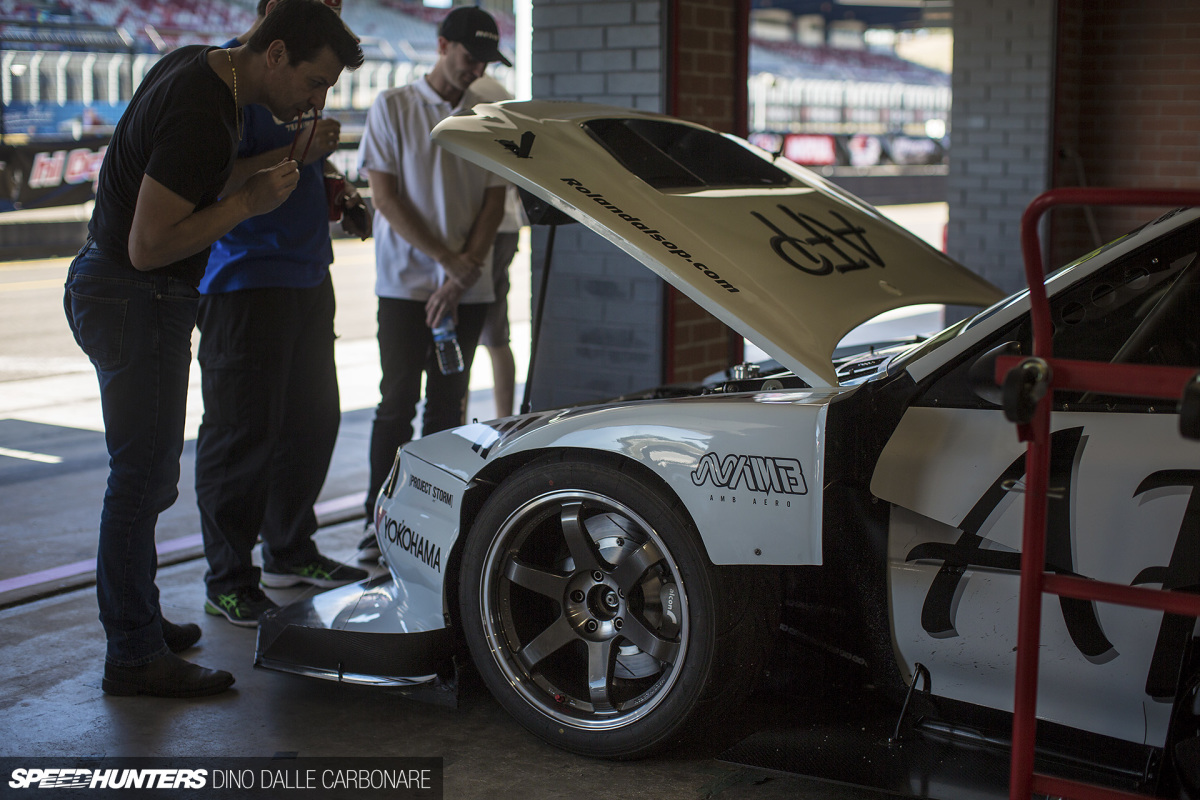
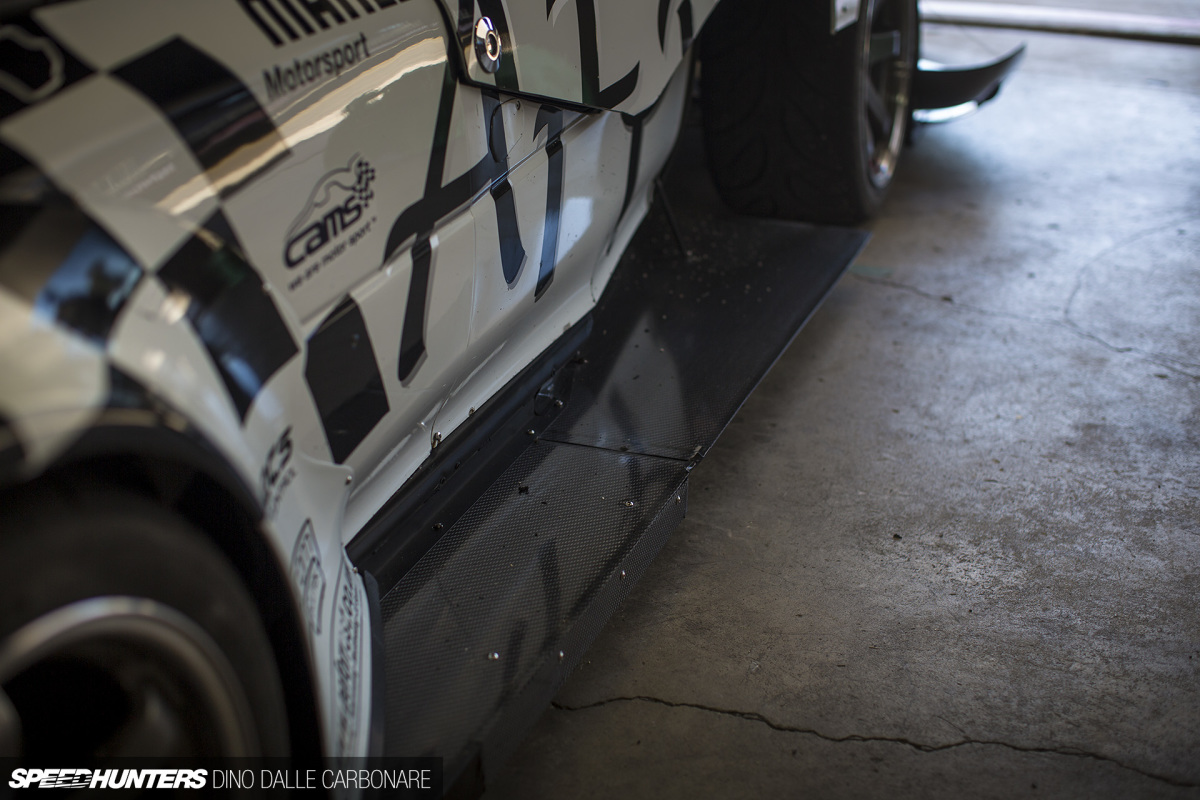
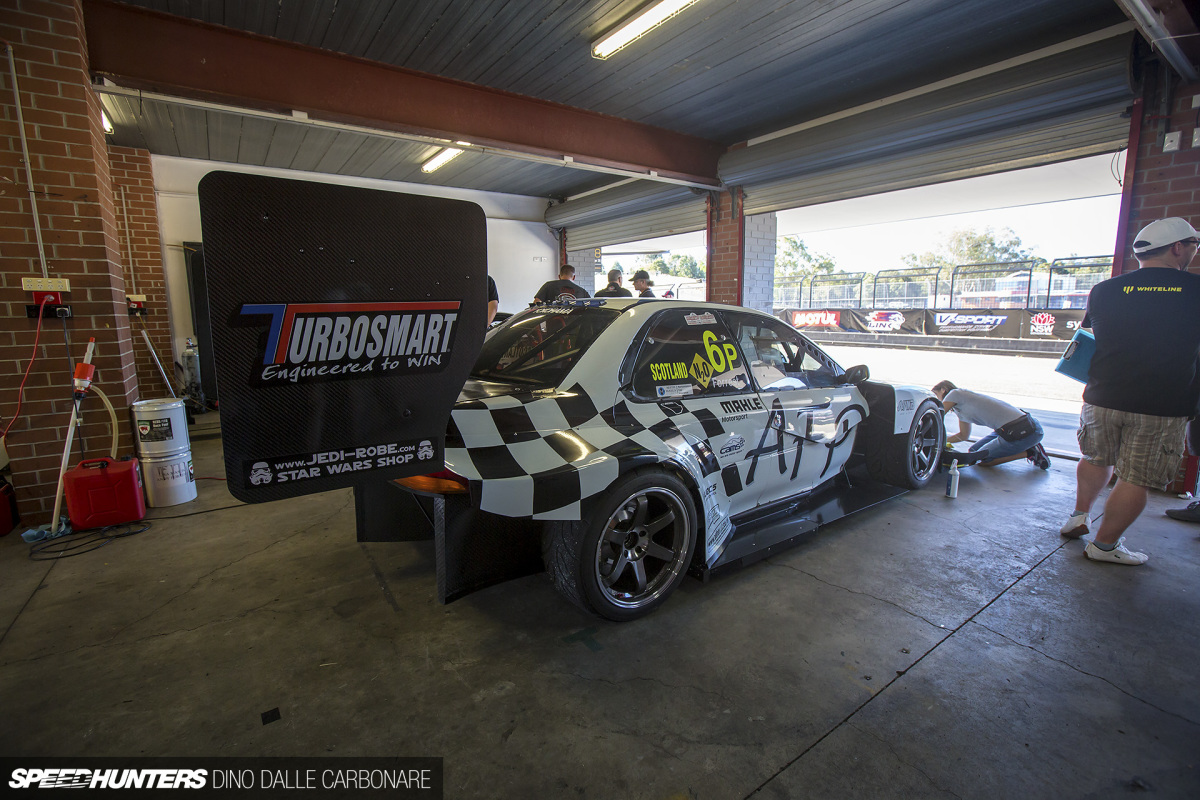
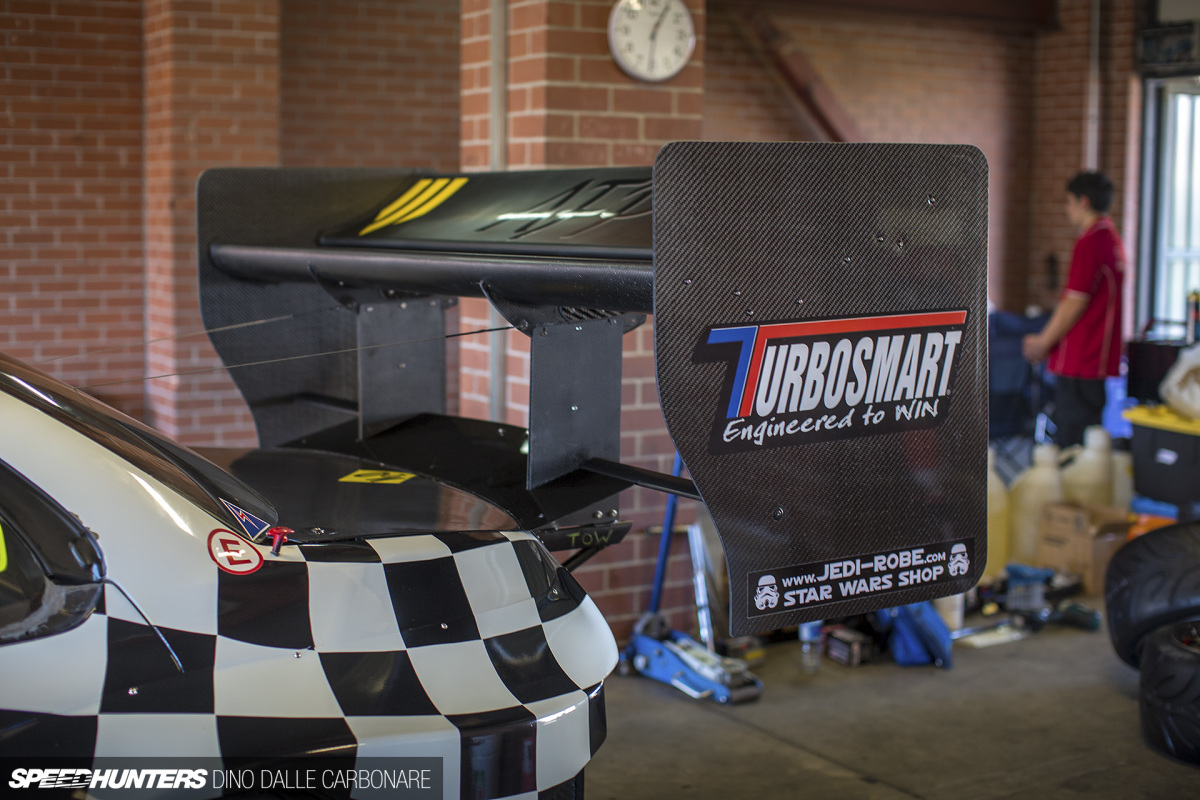
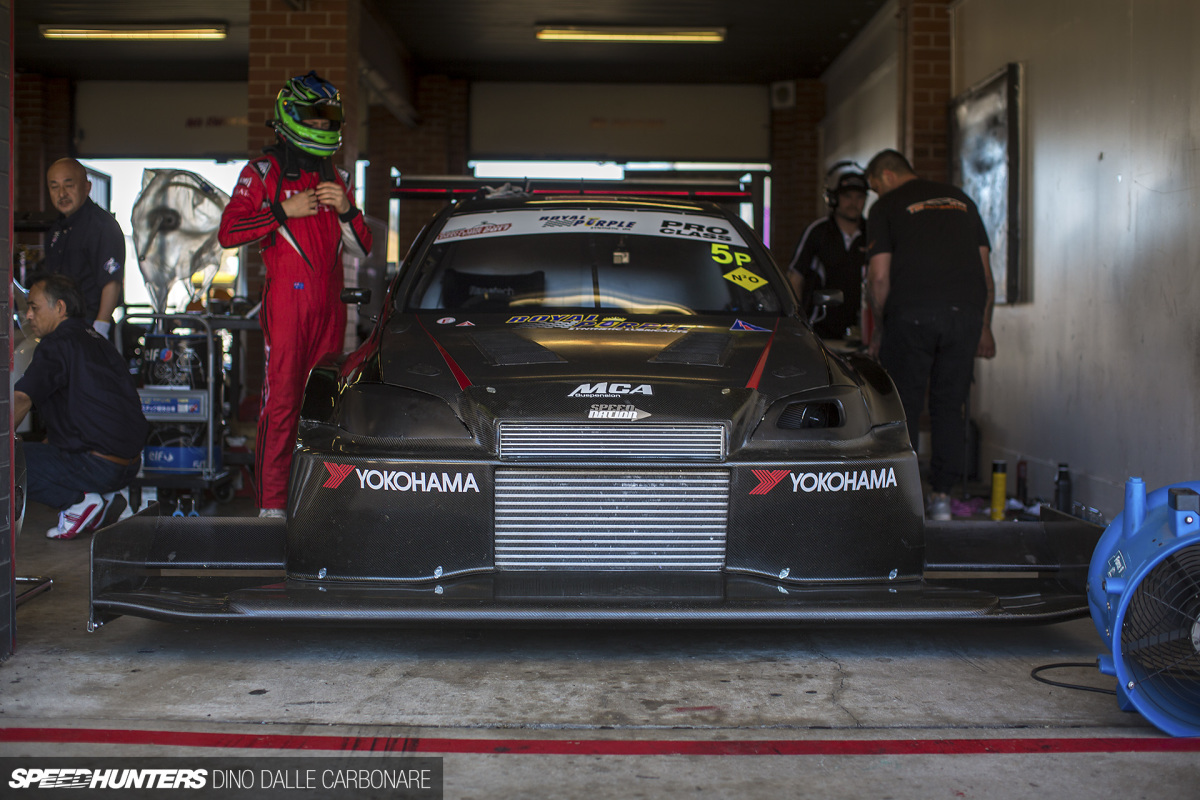
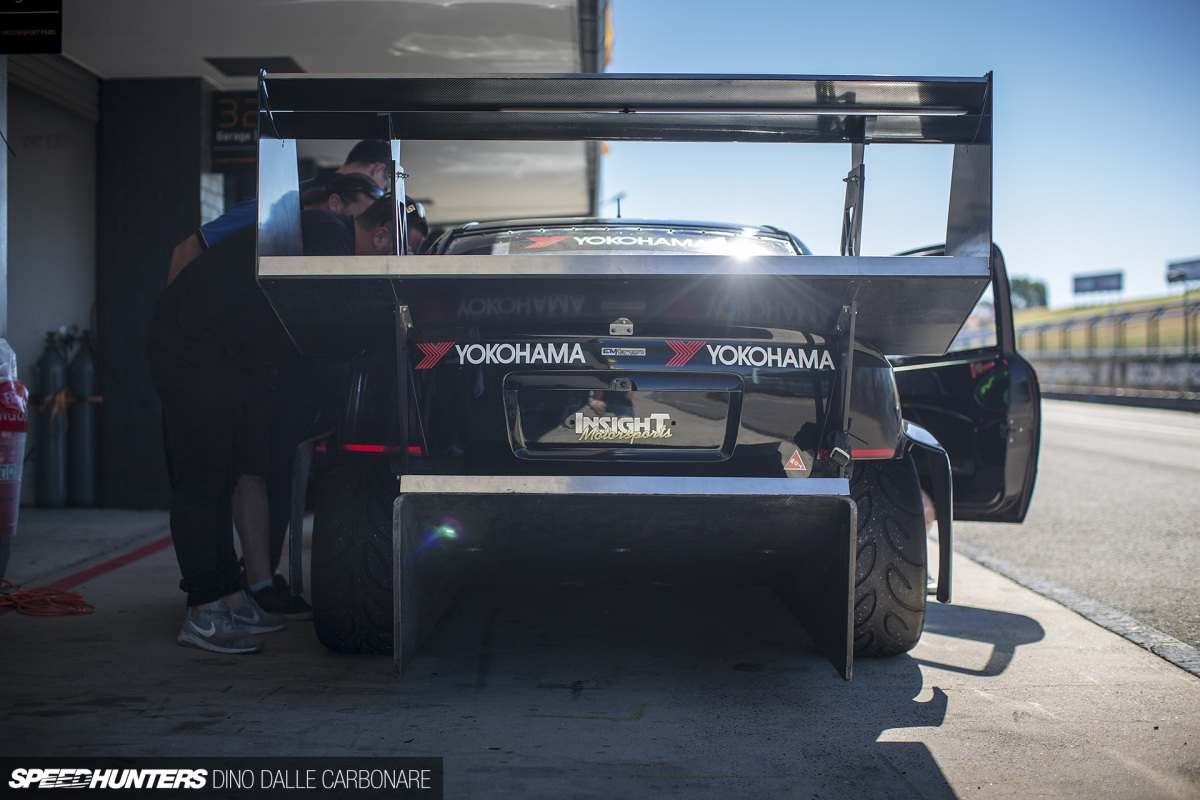
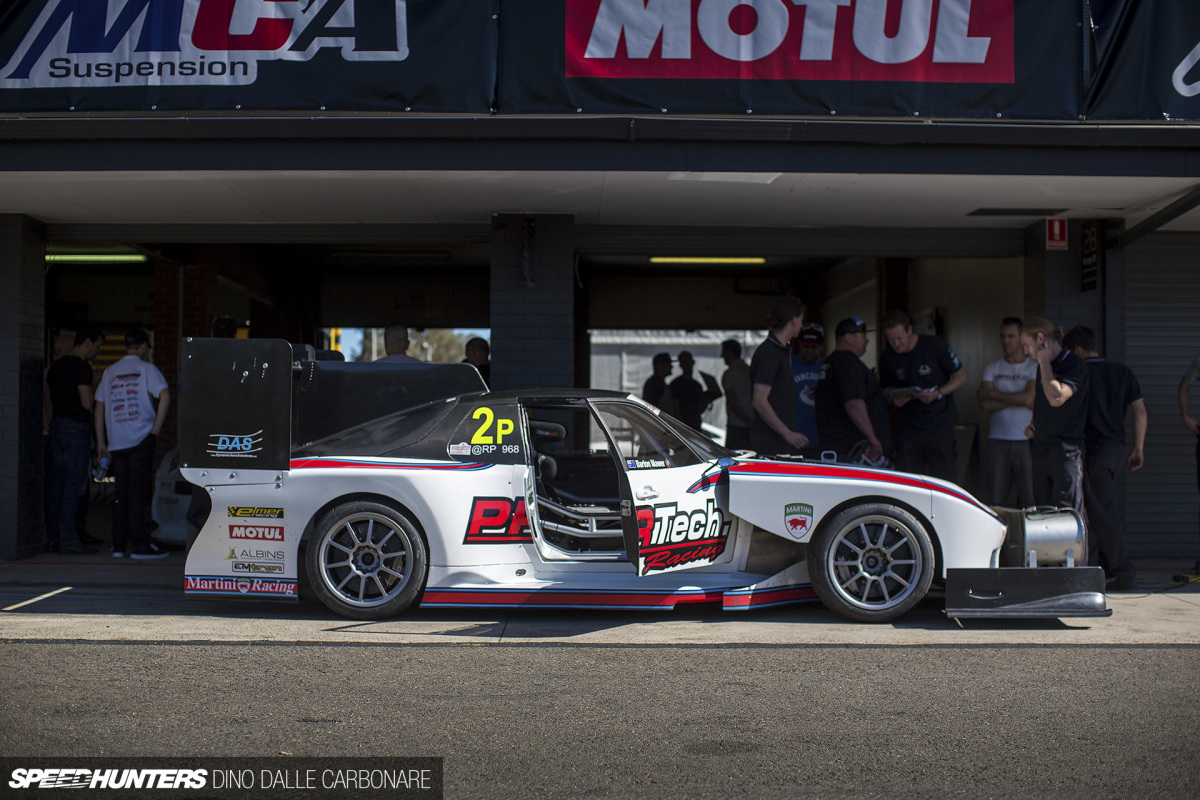
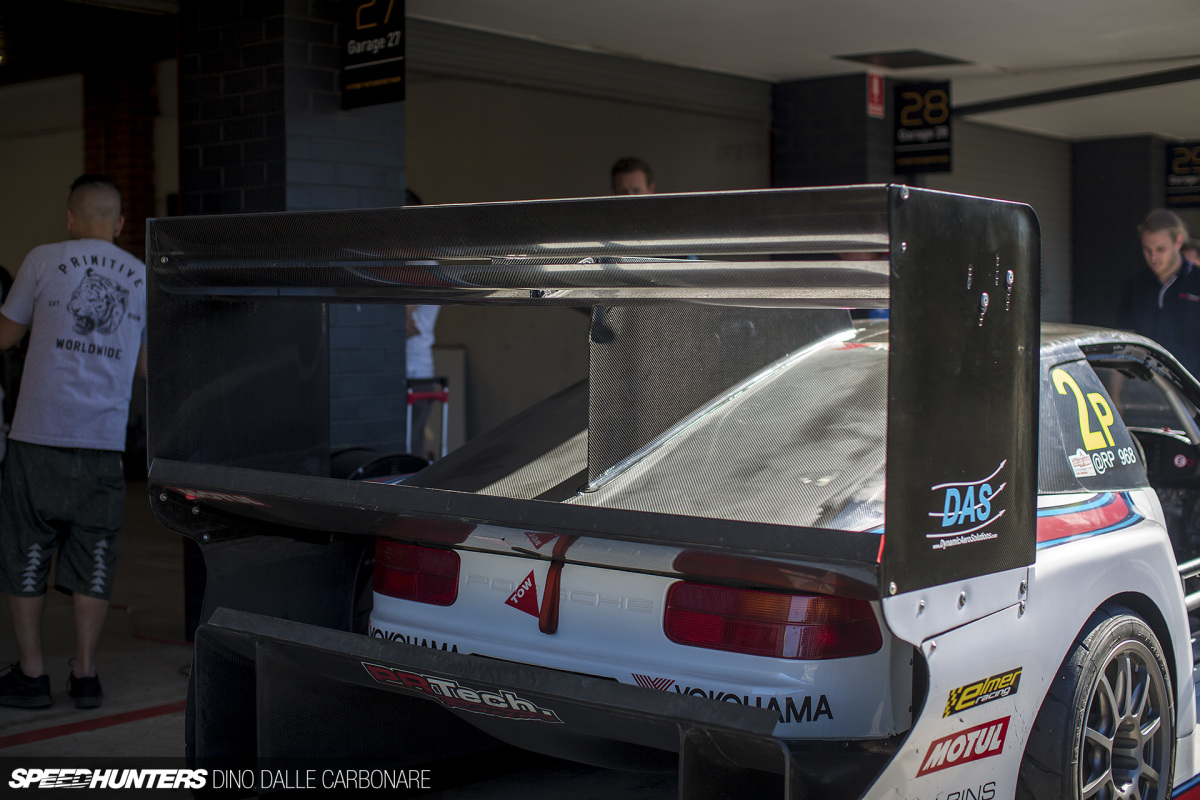
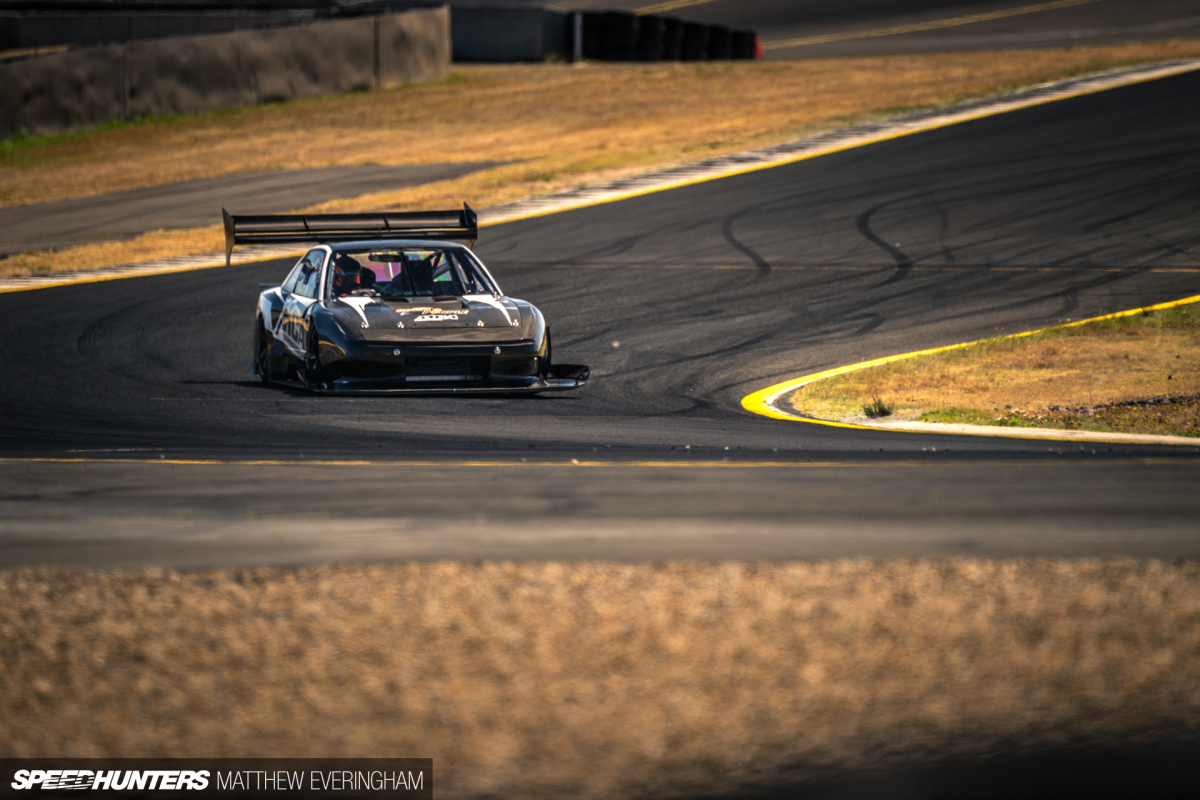
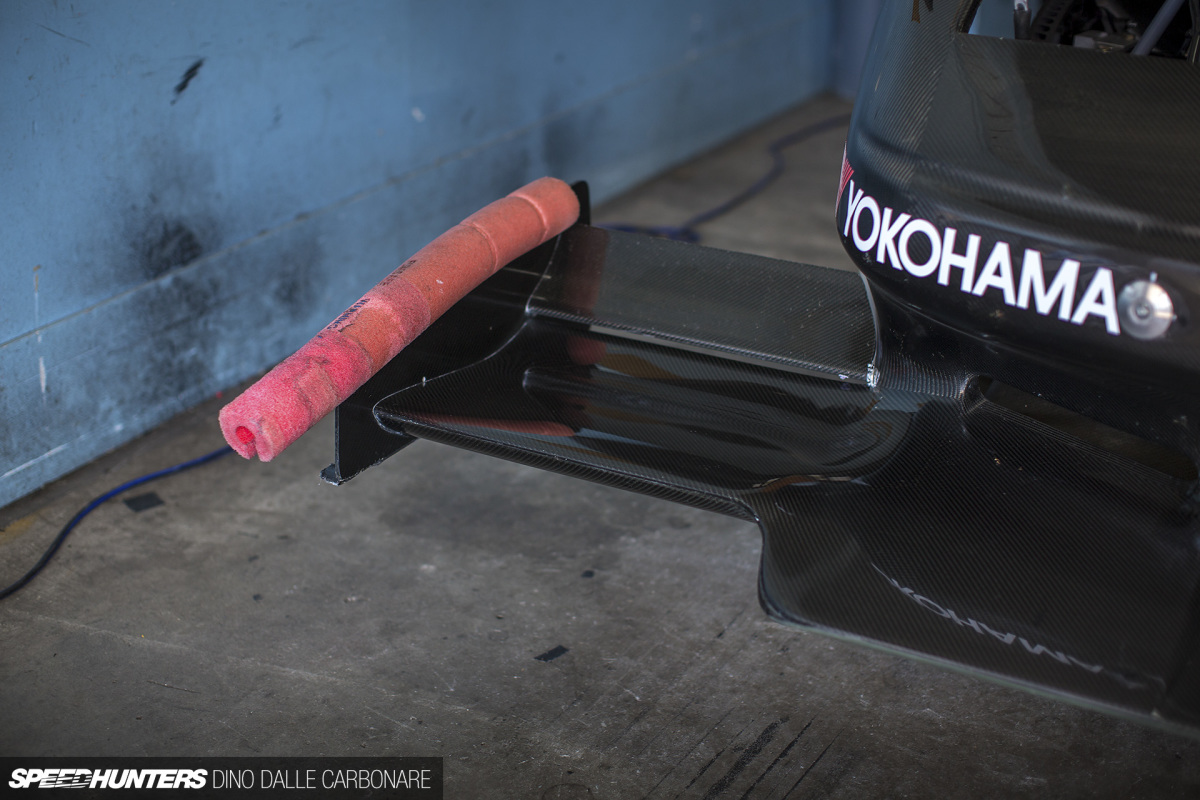





I'm very interested to read a white paper on the development of any of these aero packages.
I second that!
I guess a lot of it is CAD and Sims, but would love to have an insight into it all
We'll probably do something with Andrew Brilliant eventually, there is so much fascinating stuff to learn about these cars
White papers don't mean a lot when it comes to aerodynamics. A good friend of mine helped develop race cars with David Bruns who penned championship winning Indy cars. I also race with a guy who was a Mclaren Formula 1 designer. They have countless stories about how stuff that looked great in cad / on paper didn't perform at the race track.
Despite all these huge wings and splitters you have to remember downforce is created underneath the car and the floor design is more important than anything. That is a field few people in the world understand. At the end of the day you have to remember there is a reason why guys like Newey make the money they do. I'm more interested in the lift to drag ratios of these setups, frontal area and what speed they average around these circuits they are racing on.
Agreed. My interest is more along the lines of wondering whether the conclusions would read, "and then none of this worked, so we made the floor flat and started guessing about diffusers." I can't imagine there is too much time to be found with these exaggerated wings/canards/splitters compared to good airflow management tip to tail via more subtle/integrated design changes.
I've spoken to several guys who were in F1 about the designs of these cars and a close friend who helped develop cars with David Bruns. No one wants to hear what I say anymore so I don't bother lol.
MCA Also have an infinity front wing design similar to Andy Forrest's WRX.
Be interesting to see how the track times compare with the 2 vastly different designs.
No they didn't have time to develop that all the way, so they are running a modified version of last years
You almost can't see the actual car under all of the wings
#becausetimeattack haha
I absolutely LOVE time attack cars because the aggressive styling, and every bit it is FUNCTIONAL.
Function over form all the way with these cars
You know you're into cars when you can work out the make & model just from the tail lights. Damn thats a crazy scoob!
Wait till you see the spotlight. It runs an R35 transaxle DSG gearbox and to send drive back up to the front wheels they use chain drive! Blew my mind. The flat-6 engine sits so far back in the chassis the turbo literally is inside the dashboard. All in the pursuit of optimal weight distribution
Amazing. Bet is sounds the fucking nuts.
It does sound pretty mental!
I wonder when teams will start copying the DTM Calibras AWD system, with its front axle offset gears
Tell me more
Same problem, AWD system where the engine block is basically right where the front diff and driveshafts need to be. So they used a stack of three gear wheels per side to get the drive aside of the block. So far I haven't seen the Forrest WRX drive system anywhere, but I imagine the Calibra DTM system may have been the inspiration.
HKS is join WTAC this year with their GT86 or not?
No HKS's main aim with their new 86 is only Tsukuba. They'll be rolling out the car soon to attempt to get some baseline times and see if they can challenge Under Suzuki. Maybe if they set a record this season they'll bring the car to WTAC next year?
Dino with all due respect to the Japanese tuning scene how relevant is Tsukuba anymore? No one is really testing there or using it as a bench mark other than the Japanese. I'd think if you want to prove your stuff these days the ring or a major racing series would be the way to go.
WTAC is the equivalent to wearing Uggs in the motorsport world. Ask any girl and they'll justify it to the day they die "Yeah, I know they're ugly but their so warm (functional)..."
LOL WTF
Haha, on that note the NHRA is a coked out fishnet wearing stripper with fire works in her back pack.
I don't get it...but I don't think you're wrong
It's because they are both very easy, yet there is also a very good chance they'll both violently and unexpectedly murder you.
Loving that subbie on that big wing... Wait what?
Seems to me there is no limit to the aero elements you can employ on the car in order to produce grip. If that is the case, I am still scratching my head and wondering why nobody has thought about ground-effects - the ground breaking technology introduced in formula one in the 70s by Lotus. The key was exploiting an aerodynamic principle known as the Venturi effect, whereby the underside of the car could be designed so as to make the entire chassis act like one giant wing which sucked the car to the ground producing massive cornering grip and increased performance. Brabham actually built upon Lotus' idea and used massive fans at the back of their cars to sucked in the air underneath the car and deploy it at the back minimizing the turbulent air (further enhancing the aerodynamics) as the car sliced through the air.
Almost all of the top cars are using ground effect to some degree or another. It simply doesn't work the same on a full body car the same as a formula type car. Porsche realised this with the 956 era cars and that was the birth or the 'tunnel' design shown on both AFP impreza and under suzuki cars
All of these cars have CFD engineered reverse staggered undertrays with blown defusors to genereate downforce through that exact phenomenon you are talking about. No one is missing out, about 60% of the downforce on these cars come from the undertray.
Look closer at the top Pro Class cars. They are all heavily using ground effect aerodynamics to generate downforce. Active aero is not permitted per WTAC rules so you can't use suction fans like the Brabham and Chaparral cars.
Dennis - a close friend of mine used to design cars like that. They are incredibly difficult to engineer properly. Tunnel size, shape and ramp profile can become incredibly sensitive to pitch. Done wrong a ride height change as little as 1 millimeter can make a car completely undriveable. I made a comment above, but essentially very few people in the world really understand how to design the stuff. They require extensive testing and $$$ to implement.
To have a car with a working undertray be undriveable after a rideheight change of 1mm, sounds extreme. All GT and Formula cars AND all of these timeattach cars have extremely efficient undertrays generating massive amounts of downforce. Its a whole science and engineers are still innovating new floor profiles in motorsport but unless paired with extreme speed or "jumping" these floors dont make cars undrivable if they are decently built. Doing my CFD analysis atm for my floor build (home brew time attack-type track car).
The car I'm speaking about was extensively refined in CFD and then impossible to drive on an actual race track. Designed by David Bruns who was an Indy winner and designer. My buddy was his chief test driver after a series of changes made to the cars to attempt to be competitive with Ralt's. Another buddy of mine designed Senna's MP4/4. You'd be surprised man...
that'd be interesting to see implemented on a road car chassis. i'm sure there are some rules to Time Attack Pro class but i haven't really seen them come up in any of the coverage. and i guess that's why get more excited about seeing the cars competing here than in WEC or F1. all that big manufacturer $$ means nothing when you have to artificially limit progress. there is something pretty pure here about do whatever it takes and get around the course fastest.
This IS Speedhunting! Probably won't be as much coverage as I would like (which is lots and lots).
We will have an update at the end of each day plus a lot to follow next week once we all get back to the office and start going through the pix we've amassed
wicked photos i love how these cars are looking , this is speedhunting at its finest
We are all loving how this sport is progressing and growing. Thanks
found this the other day , i think it was the first event held over here in the uk in 2006 its it amazing to see how far the cars have come and where they are going with this
https://i.imgur.com/wHcMHAN.jpg
https://i.imgur.com/9LoQ3Mq.jpg
https://i.imgur.com/NCHIf5T.jpg
Wings are good...Big wings are better. but I am worried the wings get too ass-big some day.
kys
This car looks like ass, you make me want to fucking hang myself